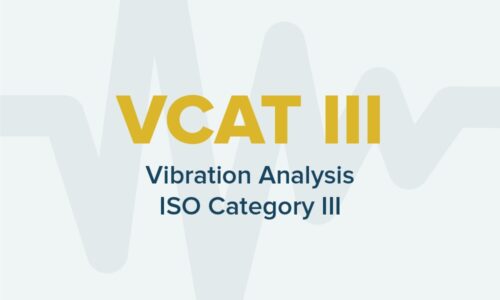

You will learn to diagnose all of the common faults conditions with rolling element and sleeve bearing machines, by utilizing time waveforms, phase readings and other techniques to diagnose faults. You will also learn machine dynamics (natural frequencies, resonance, etc.) and how to perform resonance testing and correct resonance problems. The course also covers single and cross-channel measurement capabilities of your analyzer. And after completing the CAT-III course, you will be able to set and run a successful vibration program, and mentor the junior analysts.
Mobius vibration analysis training is unique. We use 3D animations, Flash simulations, and numerous software simulators that completely demystify vibration analysis. While vibration training courses have traditionally been very theoretical, difficult to understand, (and boring), you will be captivated by the Mobius training methods, and you will enjoy our practical approach. You will take away skills that you can immediately apply to your job, and you will truly understand what you are doing.
You will come away from the course with a solid understanding of:
Day 1
Review of condition monitoring technologies and the ISO standards
Signal processing and data acquisition
DAY 2
Time waveform analysis
Phase analysis
Dynamics (natural frequencies and resonance)
Day 3
Testing for natural frequencies
Operating Deflection Shape (ODS) analysis
Modal analysis and intro to FEA
Correcting resonances
Day 4
Rolling element bearing fault detection
Journal bearing fault detection
Electric motor testing
Pumps, fans and compressors
Day 5
Gearbox fault detection
Corrective action
Running a successful condition monitoring program
BTS will issue an attendance certificate for those who complete 80% of the course successfully.
It is an exam preparation training only.
For booking the exam, you can do it by yourself using the following link:
https://www.mobiusinstitute.com/
| Code | Date | Venue | Fees | Register |
|---|---|---|---|---|
| MI255-05 | 18-11-2024 | Istanbul | USD 5950 | |
| MI255-01 | 20-04-2025 | Dubai | USD 5450 | |
| MI255-02 | 06-07-2025 | Manama | USD 5450 | |
| MI255-03 | 31-08-2025 | Dubai | USD 5450 | |
| MI255-04 | 17-11-2025 | Istanbul | USD 5950 |
Providing services with a high quality that are satisfying the requirements
Appling the specifications and legalizations to ensure the quality of service.
Best utilization of resources for continually improving the business activities.
BTS keen to selects highly technical instructors based on professional field experience
Since BTS was established, it considered a training partner for world class oil & gas institution
1st floor, Incubator Buildingو Masdar City, Abu Dhabi, UAE
Sun to Fri 09:00 AM to 06:00 PM
Contact Us anytime!
Request Info